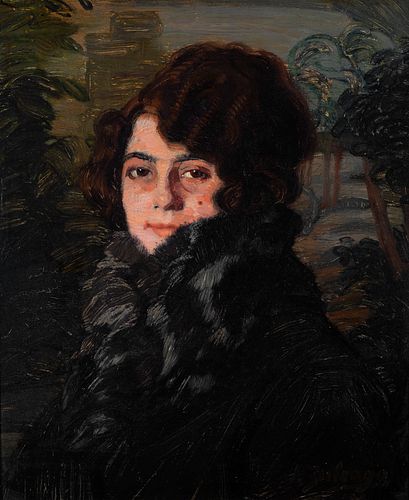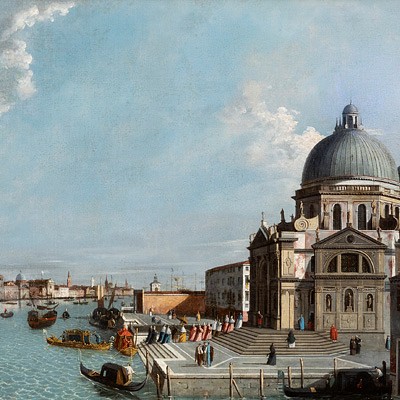IGNACIO ZULOAGA Y ZABALETA (Éibar, Guipúzcoa, 1870 - Madrid, 1945). "Female portrait". Oil on panel. Signed in the lower right corner.
Lot 59
About Seller
Setdart Auction House
Carrer Aragó 346
Barcelona
Spain
Setdart Subastas was born in 2004 and is currently the first online art auction in Spain with solidity, prestige and reliability guaranteed by our more than 60,000 users. Setdart has a young, dynamic and enterprising team ready to successfully manage the purchase and sale of art works through custom...Read more
Estimate:
EUR€60,000 - EUR€70,000
$64,516.13 - $75,268.82
Absentee vs Live bid
Two ways to bid:
- Leave a max absentee bid and the platform will bid on your behalf up to your maximum bid during the live auction.
- Bid live during the auction and your bids will be submitted real-time to the auctioneer.
Bid Increments
| Price | Bid Increment |
|---|---|
| EUR€0 | EUR€10 |
| EUR€200 | EUR€25 |
| EUR€500 | EUR€50 |
| EUR€1,000 | EUR€100 |
| EUR€3,000 | EUR€200 |
| EUR€5,000 | EUR€500 |
| EUR€10,000 | EUR€1,000 |
| EUR€20,000 | EUR€2,000 |
| EUR€50,000 | EUR€5,000 |
About Auction
By Setdart Auction House
May 18, 2021
Set Reminder
2021-05-18 09:30:00
2021-05-18 09:30:00
America/New_York
Bidsquare
Bidsquare : Classics XIX and XX
https://www.bidsquare.com/auctions/setdart-auction-house/classics-xix-and-xx-6961
The next 18th May there will be a 19th and 20th Century Classics Auction at Setdart.com There will be a select repertoire of important artists such as Carlos Cruz Diez, Luis Feito, Joan Miró, Fernando Botero, Josep Llimona, Salvador Dalí among others. Setdart Auction House sofia@setdart.com
The next 18th May there will be a 19th and 20th Century Classics Auction at Setdart.com There will be a select repertoire of important artists such as Carlos Cruz Diez, Luis Feito, Joan Miró, Fernando Botero, Josep Llimona, Salvador Dalí among others. Setdart Auction House sofia@setdart.com
- Lot Description
IGNACIO ZULOAGA Y ZABALETA (Éibar, Guipúzcoa, 1870 - Madrid, 1945). "Female portrait". Oil on panel. Signed in the lower right corner. With a Spanish frame from the 18th century. Measurements: 55 x 45.5 cm; 69.5 x 61 cm (frame). In the magnificent oil painting presented here, Ignacio Zuloaga is faithful to his style, offering the viewer a work in which his genius is evident, which perpetuates the image of a traditional and traditional Spain. Zuloaga gives us the portrait of a young lady with a deep gaze and dark black eyes, who protects her neck with a set of furs, wrapped in a shimmering light that radiates warmth and mystery. The woman's face stands out vividly illuminated by a clear and natural light, which gives a certain pearly tone to her skin. The young woman adopts a natural and casual attitude, looking directly at the viewer, in front of a localist landscape that reflects the love for the land, the beauty and lyricism of the everyday, what is close and known to Zuloaga. Son of the notable damascene artist Plácido Zuloaga, and nephew of Daniel Zuloaga, one of the most outstanding Spanish ceramists of his time, Ignacio Zuloaga worked as a child in his father's workshop, where he had his first contact with drawing and engraving. He later began studying engineering, but abandoned his studies to devote himself to painting. He acquired his artistic training at the Prado Museum, copying Ribera, Goya, Velázquez and El Greco, of whom he would be one of the first propagators. In 1887 he presented a painting at the National Exhibition in Madrid, entitled "A priest praying in an old room". After a first trip to Rome in 1889, where he imbibed the Renaissance masters, Zuloaga went to Paris, where he met French artists such as M. Dethomas and Rodin, with whom he became great friends. He also met Miguel Utrillo and Santiago Rusiñol, and with the latter he traveled again to Italy. In Paris he came to practice pointillism and impressionism, and participated in some group exhibitions at the gallery Le Bar de Boutteville, frequented by the symbolists. However, the search for his own roots took him to Andalusia, where he spent some time between 1894 and 1897. In the latter year, in Segovia, he painted "My uncle and my cousins", a painting that he presented at the Paris Salon and which was acquired by the French State. In 1898 he married and settled in Madrid, although he made frequent trips to the French capital. The following year he presented his "Family Portrait" at the Paris Salon, which was also acquired by the French Government. From 1903 onwards he took part in international exhibitions and his fame grew. Between 1906 and 1913 he worked in Segovia, attracted by the austerity of the Castilian landscape and the quiet and humble dignity of its inhabitants, influenced by the ideology of the Generation of '98. In 1908 he was invited to present an exhibition in New York. At the outbreak of World War I he returned to the Basque Country and lived in a 12th century monastery in Zumaya (Guipúzcoa), later converted into a museum, where he installed his rich collection of works of art, including paintings by El Greco and Goya. Such was his admiration for the Aragonese master that he even bought his birthplace in Fuendetodos. Likewise, in 1926 he acquired the castle of Pedraza (Segovia), also converted into a museum. Ignacio Zuloaga is today considered, together with Gutiérrez Solana, the continuator of the tradition of Spanish painting throughout the 20th century. He is currently represented in prominent museums such as the Prado (works attached to the Museo Nacional Centro de Arte Reina Sofía), as well as in others around the world such as the Orsay, the Rodin and the National de Versailles in Paris, the Hermitage in St. Petersburg, the Metropolitan in New York, the Thyssen-Bornemisza in Madrid, among others.
- Shipping Info
-
In-House Shipping
-
- Buyer's Premium



 EUR
EUR CAD
CAD AUD
AUD GBP
GBP MXN
MXN HKD
HKD CNY
CNY MYR
MYR SEK
SEK SGD
SGD CHF
CHF THB
THB















